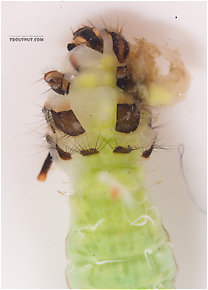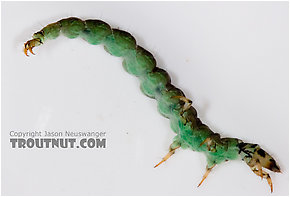Blog & Latest Updates
Fly Fishing Articles
Insects by Common Name


Caddisflies
Some anglers consider caddisflies to be even more important than mayflies, and on many rivers they're right. Angler-entomologists focus less energy on them because they are slightly less prone to cause a feeding frenzy among the trout. While that does happen, they are more commonly an intermittent food source during the times when it seems like nothing's hatching. Understanding their life cycle is of paramount importance to any fly fisher, but learning their quirks species-by-species is less useful than with mayflies.
This common name refers to only one order.
Insect Order Trichoptera
These are pretty much always called Caddisflies.
Some say caddisflies are even more important than mayflies, and they are probably right. The angling world has taken a while to come to terms with this blasphemy. Caddis imitations are close to receiving their fare share of time on the end of the tippet, but too many anglers still assume all caddisflies are pretty much the same.
Caddis species actually provide as much incentive to learn their specifics as the mayflies do. There is just as much variety in their emergence and egg-laying behaviors, and as many patterns and techniques are needed to match them. Anglers are hampered only by the relative lack of information about caddisfly behavior and identification.
Caddis species actually provide as much incentive to learn their specifics as the mayflies do. There is just as much variety in their emergence and egg-laying behaviors, and as many patterns and techniques are needed to match them. Anglers are hampered only by the relative lack of information about caddisfly behavior and identification.
Brachycentrus (Grannoms) Caddisfly Pupa View 10 PicturesThe green blob contained in this case is a pupa in the early stages of transformation from larva to the final stage we generally picture and imitate. This specimen and several like it were fixed to a rock I picked up, and each one had the front of its case sealed off, protecting the helpless pupa from predation. It's neat to see the insect part-way through such a radical transformation.
View 10 PicturesThe green blob contained in this case is a pupa in the early stages of transformation from larva to the final stage we generally picture and imitate. This specimen and several like it were fixed to a rock I picked up, and each one had the front of its case sealed off, protecting the helpless pupa from predation. It's neat to see the insect part-way through such a radical transformation.
It was very hard to extract this thing from its case, so there's a bit of extra goo near the head from where I accidentally punctured it.
 View 10 PicturesThe green blob contained in this case is a pupa in the early stages of transformation from larva to the final stage we generally picture and imitate. This specimen and several like it were fixed to a rock I picked up, and each one had the front of its case sealed off, protecting the helpless pupa from predation. It's neat to see the insect part-way through such a radical transformation.
View 10 PicturesThe green blob contained in this case is a pupa in the early stages of transformation from larva to the final stage we generally picture and imitate. This specimen and several like it were fixed to a rock I picked up, and each one had the front of its case sealed off, protecting the helpless pupa from predation. It's neat to see the insect part-way through such a radical transformation.It was very hard to extract this thing from its case, so there's a bit of extra goo near the head from where I accidentally punctured it.
Neophylax (Autumn Mottled Sedges) Caddisfly Adult View 20 PicturesThis large caddisfly looks really neat close-up.
View 20 PicturesThis large caddisfly looks really neat close-up.
 View 20 PicturesThis large caddisfly looks really neat close-up.
View 20 PicturesThis large caddisfly looks really neat close-up.See 124 more specimens...
Top 10 Fly Hatches
Top Gift Shop Designs
Eat mayflies.
Top Insect Specimens
Miscellaneous Sites
Troutnut.com is copyright © 2004-2024 Jason
Neuswanger (email Jason). See my FAQ for information about use of my images.
 privacy policy
privacy policy


